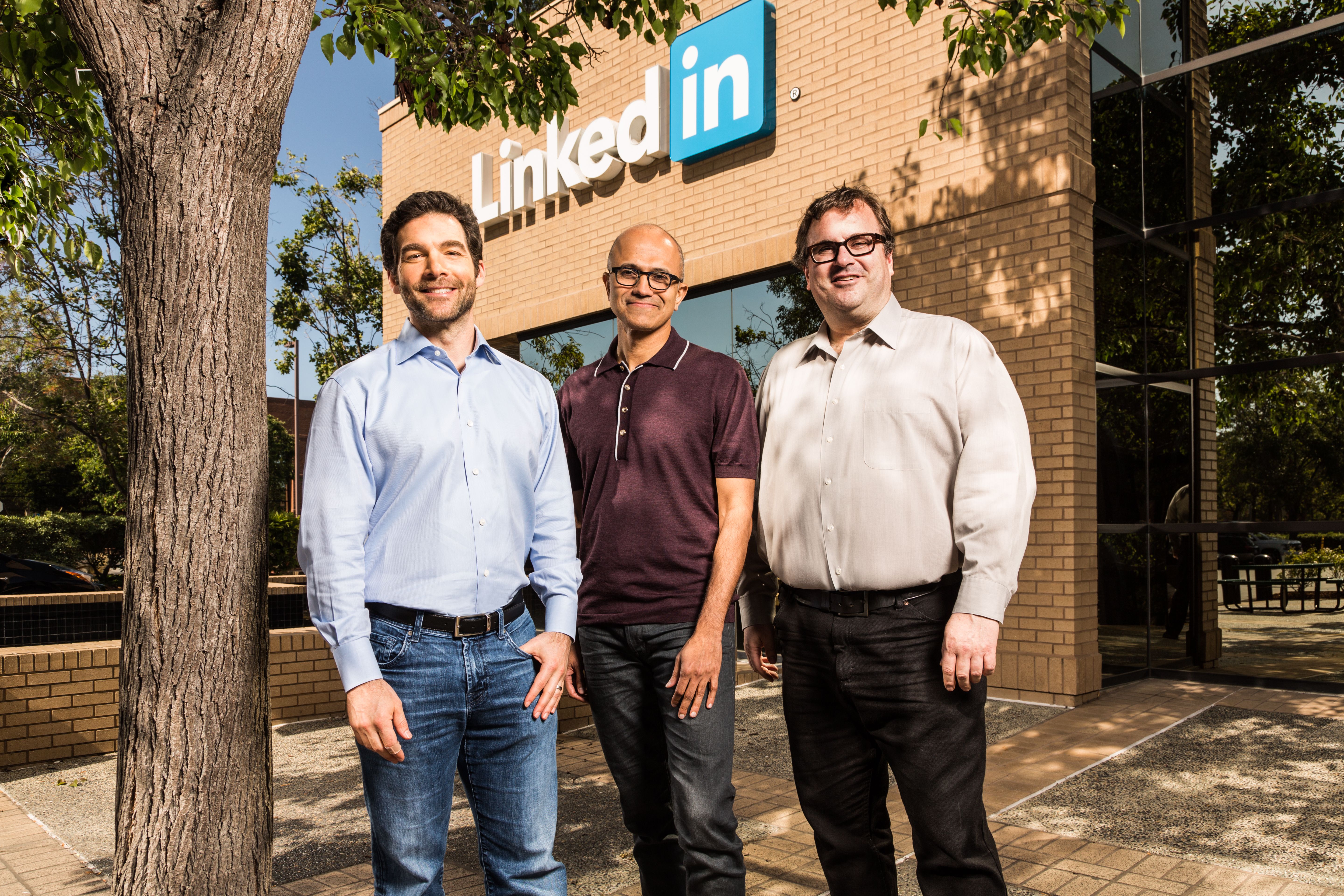Microsoft has announced this morning that it will be acquiring LinkedIn in a deal worth $26.2 billion.
Day-to-day running of LinkedIn will remain largely unchanged, with the current CEO Jeff Weiner staying in charge and reporting directly to Satya Nadella, CEO of Microsoft. Both Reid Hoffman, co-founder of LinkedIn and Jeff Weiner full supported the deal along with the entire Board of Directors.
The deal is expected to close officially at the end of this calendar year. That means that by January 2017, LinkedIn will officially be Microsoft property.
“The LinkedIn team has grown a fantastic business centered on connecting the world’s professionals,” Nadella said. “Together we can accelerate the growth of LinkedIn, as well as Microsoft Office 365 and Dynamics as we seek to empower every person and organization on the planet.”
It's clear the two companies are seeing this as an ideal partnership. The language is very much based around Microsoft as the "World's Leading Professional Cloud" partnering with the "World's Leading Professional Network". But exactly what this means for the long term future of LinkedIn is yet to be seen.
In the past, we've seen deals like Microsoft's purchase of Nokia go south after just a few years, while its purchase of Sunrise (a previously popular calendar app) saw the company swallow up the best features and kill the app. In the short term, however, LinkedIn will keep its own brand and independence and continue running as it is now.
Both Satya Nadella, Microsoft's chief and Jeff Weiner, LinkedIn CEO, have penned letters to their employees explaining the reasons behind the deal and what it means for them. The short version is that both companies realised quickly that their key goals and motivations match on so many levels. Although different in terms of their products, what they're trying to do with their respective products is the same.
Weiner stated the following:
"When Satya first proposed the idea of acquiring LinkedIn, he said it was absolutely essential that we had alignment on two things: Purpose and structure. On the former, it didn’t take long before the two of us realized we had virtually identical mission statements. For LinkedIn, it was to connect the world’s professionals to make them more productive and successful, and for Microsoft it was to empower every individual and organization in the world to achieve more. Essentially, we’re both trying to do the same thing but coming at it from two different places: For LinkedIn, it’s the professional network, and for Microsoft, the professional cloud."
As mentioned in the press release, LinkedIn will be allowed to keep its independence. It will operate as its own company, but with Microsoft’s backing.
The deal makes a lot of sense for both companies. It allows Microsoft to build LinkedIn’s networking tools right into Office 365 and Dynamics, to help enterprise customers connect, collaborate and learn. It also means LinkedIn has the clout to grow quickly, providing Microsoft encourages that culture and actually invests time and effort to collaborate with LinkedIn on merging common tools and beefing up each others' services.

